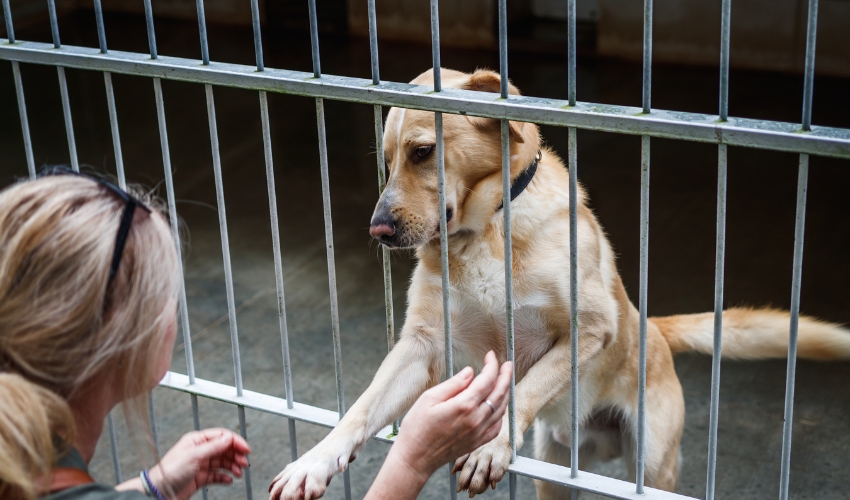I believe that animals are good for our health. So much do I believe this, that I have dedicated my career and life’s work to conducting research studies and developing  programs that aim to untangle and decipher the specific ways in which the animals we love so much impact our biosocial health and development. But I would be remiss if I didn’t acknowledge that we as scientists in this field are staking our claims and trying to build an empire on very shaky terrain, some might even classify it as earthquake prone. This is because the foundational science examining animal-assisted therapies (AAT) and the biological, psychological, and sociological impacts of animals on human health have been mired with methodological issues. So serious is this issue that many of the experts in this field have cast a skeptical light on the vast majority of the research results and findings from these studies.
programs that aim to untangle and decipher the specific ways in which the animals we love so much impact our biosocial health and development. But I would be remiss if I didn’t acknowledge that we as scientists in this field are staking our claims and trying to build an empire on very shaky terrain, some might even classify it as earthquake prone. This is because the foundational science examining animal-assisted therapies (AAT) and the biological, psychological, and sociological impacts of animals on human health have been mired with methodological issues. So serious is this issue that many of the experts in this field have cast a skeptical light on the vast majority of the research results and findings from these studies.
Several prominent researchers and scientists have recently published on the problems with studies in this field including Hal Herzog who has noted that “the existence of a generalized ‘pet effect’ on human mental and physical health is at present not a fact but an unsubstantiated hypothesis.”[1] And when you look at the literature, a good scientist cannot deny that there are serious methodological flaws in many of the research studies that have been carried out to date. Therefore, the onus is on us to be more cautious about what we say about these findings and to develop future studies that will address many of these issues.
Because an understanding of some of these methodological flaws will be important for future blog posts where I look at individual studies, below I provide a brief run down and explanation of these flaws as noted by several experts in this field.[2],[3],[4],[5]
Primary Methodological Flaws in Animal-Human Relationship Research:
- No control Group – Randomized, controlled clinical trials (RCTs) of drugs are considered to be the “gold
 standard” in terms of how to produce valid and reliable data on the therapeutic efficacy of an intervention (i.e. drug or device). One of the primary components of an RCT is a control versus intervention group. Those who receive the drug are in the “intervention” group and those who do not are in the “control” group. Control vs. Intervention designs allow researchers to assess whether the changes seen in the intervention group were due to the intervention itself or an outside, unrelated factor. Assessing change in a study without a control group for comparison is much more difficult.
standard” in terms of how to produce valid and reliable data on the therapeutic efficacy of an intervention (i.e. drug or device). One of the primary components of an RCT is a control versus intervention group. Those who receive the drug are in the “intervention” group and those who do not are in the “control” group. Control vs. Intervention designs allow researchers to assess whether the changes seen in the intervention group were due to the intervention itself or an outside, unrelated factor. Assessing change in a study without a control group for comparison is much more difficult. - Small sample sizes – Small sample sizes are often criticized in scientific literature because it means that the study will be unable to show an effect size or be “powered” enough to show whether or not the intervention actually worked.
- Effect Size: A positive or strong effect size (around .80) allows researchers to say that there was a strong difference between the intervention and control groups; meaning the intervention had a strong effect. With a small number of study participants, it is very difficult to show a large effect size, even if one might be present.
- Statistical Power: Let’s say the power of a study is 90%. This means that if you replicate the study, 90% of the time you would get the same results. So, the stronger the power, the more likely it is that your results are accurate. Study power is directly related to both the size of the study sample and the effect size. If an effect size is small, you will need more participants in the study to show it. Likewise, a small effect size suggests that the study was underpowered. (See Herzog on this for a simple and clear description of how power and effect sizes impact studies).
- Lack of blinding – In RCTs, double-blinding is the norm. This means that neither the researcher nor the participant knows what treatment the participant is receiving. Single-blinding also occurs and means that only the researcher or the participant knows what the participant received (i.e. drug or placebo). Often in animal-human studies it is very difficult to blind participants (i.e. they’ll know if they’re interacting with an animal or not!) as well as researchers who are implementing the studies. Conducting blinded studies of how animals impact humans is difficult and therefore, is rarely done. This can lead to bias among researchers in study results.
- Reliance on self-report rather than objective (i.e. more biological, physiological measures) – Self-report measures are those that participants fill out themselves, and are subject to bias by the participant. This is particularly true in studies that do not have blinding, as a study participant could be strongly invested in the idea that his/her pet is helping him/her and could influence the way he/she responds to questions on this topic. Other measures, that look at biological changes in the body such as oxytocin changes, immune function, allergy response, stress and so forth, are said to be more “objective” because the study participant cannot manipulate them based on his/her own bias in the study. While some researchers (such as myself) work hard to incorporate both objective and subjective measuring tools in our designs, it is important to note that such studies are much more expensive and logistically challenging.
- Lack of long-term studies – Studies that follow participants for one, two, or even five years following an intervention examine the long-term impact of an intervention. They are important because they can provide clues into how well an intervention holds up over time, how it continues to work or does not work, and what might be done to enhance its efficacy over the life-course of the human/animal dyad involved.
- The “File Drawer Effect” – This refers to the bias against publishing negative study results. The majority of studies that find their way to publication show positive results. This can have a profound impact on the way in which we understand scientific results in research, how science is funded and conducted, and ultimately what drugs make it market. Many studies in animal-human interaction research that have negative or null results do not make it to publication.
The file drawer effect is not inconsequential. It can, and has, had very real implications for consumers and patients. For example, in 2008, an FDA study found that anti-depressant manufacturers such as Paxil and Eli Lilly did not publish nearly one third of their findings from drug studies. When these unpublished studies are included in the analysis of the results of drugs for depression, instead of the reported significant positive changes on depression that were reported in the literature, only modest to very slight changes were seen in people’s responses to depression.[6] The net result is the approval, marketing, and prescription of drugs for a serious disorder, which may in fact not be helping people any more than placebo.
While critics of these studies have accurately pointed out these and other flaws in the science of the animal-human relationship, it is important to note that this does not necessarily make the researchers engaged in this work “bad” researchers or scientists. On the contrary, many of the pioneers in this field are gifted scientists and visionaries who believe deeply in the power of the animal-human relationship. And while they face many of the same issues that other biomedical research scientists face, the field of animal-human relationship science differs in several key elements.
Below I briefly touch on two of the elements that I feel have had the greatest impact on the quality of research in this field (including my own). I do this not to make excuses for the problems we face, but rather to draw attention to those issues that we must collectively address in order to move this field and the science forward.
Issues Impact Methodological Flaws in Study Design

- Cost – This is perhaps the most daunting of the issues facing this field. Although resources are increasing through funding mechanisms such as those put out by HABRI and a recent joint initiative between the Waltham Foundation and the National Institute for Child Health and Development (NICHD), the reality is that research in this field is grossly underfunded. This is particularly true when compared to drug research conducted by pharmaceutical companies.
A major reason for this is that the potential profit margins for therapies that result from animal-human interaction research are slim to none. This is particularly true for the those researchers doing this work with and on behalf of non-profit organizations, academic institutes, and other poorly funded groups working on specific health issues such as autism. Unlike other fields such as global health, where wealthy philanthropists such as Bill Gates, Bill Clinton, and Warren Buffet funnel copious amounts of funding into research and development of vaccines, biologics, and devices, the field of animal-human interaction has no such well-heeled benefactors.
Researchers in this field are often left to string together funding from multiple sources, conducting research with the scarce funds they can amass. This lack of funding then is directly related to the methodological problems outlined above.
Without ample funding, scientists are forced to reduce the number of measures implemented, the number of study subjects enrolled, decrease intervention time, and reduce the study staff available to conduct the research. Doing so can have drastic impacts on all of the issues I raised in the first half of this post.
So what is a scientist to do? The majority of us are moving forward anyway, doing what we can with the little that we have. Researchers don’t set out to do shoddy science. In fact, we are doing the best that they can with the resources at hand.
But what could we do if we had more funding to do it? How much more could we collaborate and do innovative research together that could move the field forward that much faster?
With ample funds, we could address many of the criticisms of our work head on. Ample funding would allow us to engage in designing robust, methodologically sound studies powered to show effects of the interventions under investigation.
- Meaning Responses or Life in Living Color – The reality is that research is messy. But animal-human interaction research studies are even messier than RCTs for drugs or devices. This is because animals are not drugs, biologics, or devices – they are complex, dynamic entities, continually in flux and ever changing. And, humans are animals. Therefore the complexity of studying this dynamic interchange via traditional methods of the RCT cannot be understated.
Animal-human interaction research faces many of the same challenges that have been described in the literature on studies of complementary and alternative medicine therapies like acupuncture, homeopathy, naturopathy, Ayurveda, and traditional Chinese medicine.[7]
Of particular importance in studies of these therapies are “meaning responses” which include patient-provider/doctor interaction, conditioning, expectation, emotional feelings, cultural context, and communication. Meaning responses cannot be underestimated in clinical research as they can play a very important role in determining what is scientifically provable, or not.7
A useful illustration of this is the provider-patient interaction. Not all patients respond to providers in the same way, and studies of acupuncture have shown that relationships between the “needler” and the patient can have profound impacts on the effectiveness of the acupuncture. If we consider a scenario where an animal is the “provider” of a given therapy, how then do we account for the importance of this interaction in the research?
Every study participant is going to have his/her own unique relationship with the therapy animal(s) which impact the results of the therapy for that individual. Emotional feelings, connection, the context of the interaction, and expectation will also all play a role in how the study subject experiences the therapy and ultimately the effect that therapy has on him/her.
And yet, modern science and the RCT are woefully unprepared to account for meaning responses. This is just one of the ways in which animal-human relationship studies differ from those in other fields, but it gives you a taste of how difficult it is to account for these issues in animal-human interaction studies and how they may be affecting (both positively and negatively) research results.
As you can see, this is a difficult and intricate topic! It is also one very near and dear to my heart. We will revisit many of these issues in upcoming blog posts, and I look forward to examining them in more detail with tangible examples from the literature.
Until next week, be well, be kind, and take time to appreciate the non-human world around you!
[1] Herzog, Harold. The Impact of Pets on Human Health and Psychological Well-Being: Fact, Fiction, or Hypothesis? Current Directions in Psychological Science. Volume: 20 issue: 4, page(s): 236-239 DOI: https://doi.org/10.1177/0963721411415220
[2] Wells, D. L. 2009. The Effects of Animals on Human Health and Well-being. Journal of Social Issues, 65, 523-543.
[3] Stern, C. and Chur-Hansen A. Methodological Considerations in Designing and Evaluating Animal Assisted Interventions. Animals, 2013, 3, 127-141.
[4] Kamioka, H. et. al. Effectiveness of Animal-Assisted Therapy: A Systematic Review of Randomized Controlled Trials. Complementary Therapies in Medicine, 2014, 22, 371-390.
[5] Marino, L. Construct Validity of Animal-Assisted Therapy and Activities: How Important is the Animal in AAT? Anthrozoos, 2012, 25, 139-151.
[6]http://www.nytimes.com/2008/01/17/health/17depress.html?rref=collection%2Ftimestopic%2FNew%20England%20Journal%20of%20Medicine&action=click&contentCollection=timestopics®ion=stream&module=stream_unit&version=search&contentPlacement=1&pgtype=collection.
[7] Lewith, T., Jonas, W. B., and Walach, H. Clinical Research IN Complementary Therapies: Principles, Problems, and Solutions. 2011. Churchill, Livingstone: New York.











